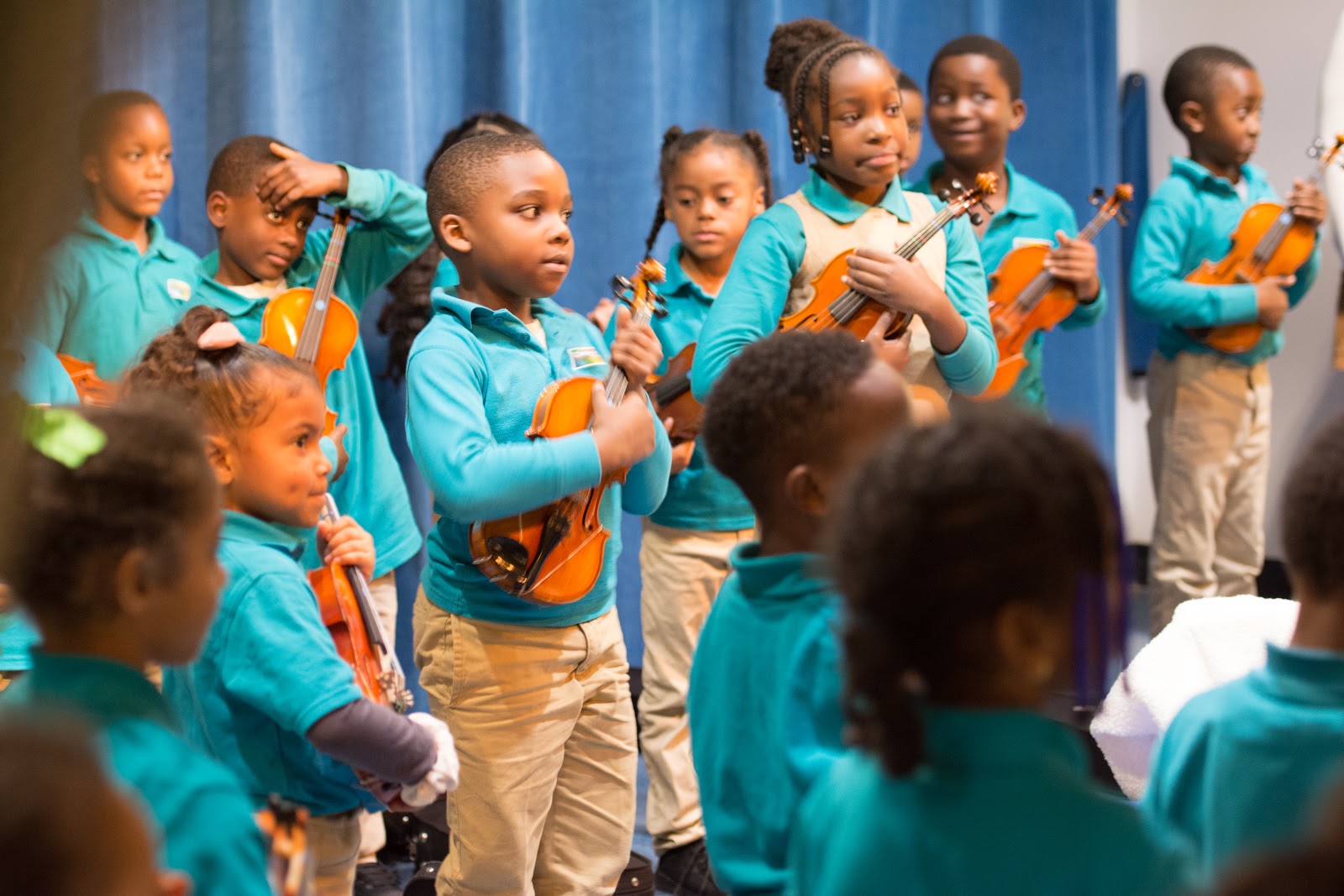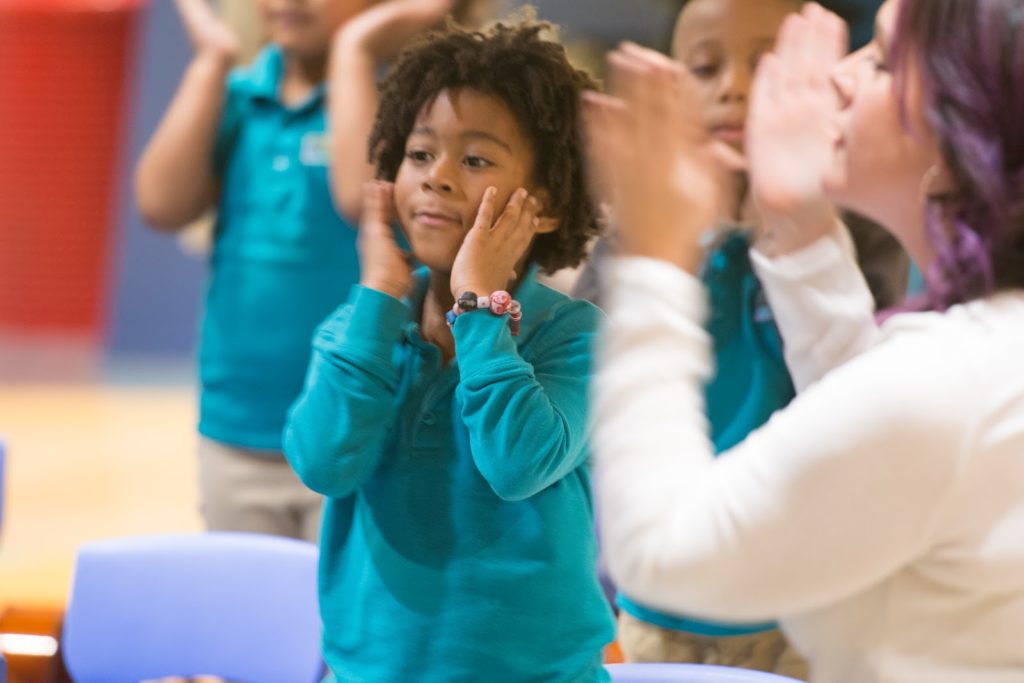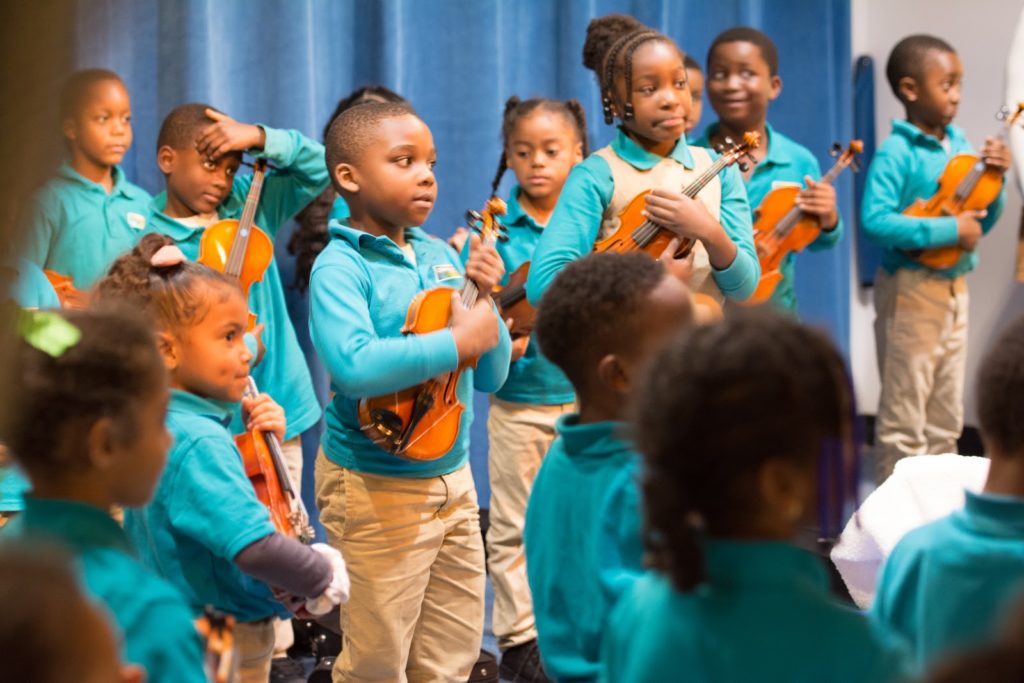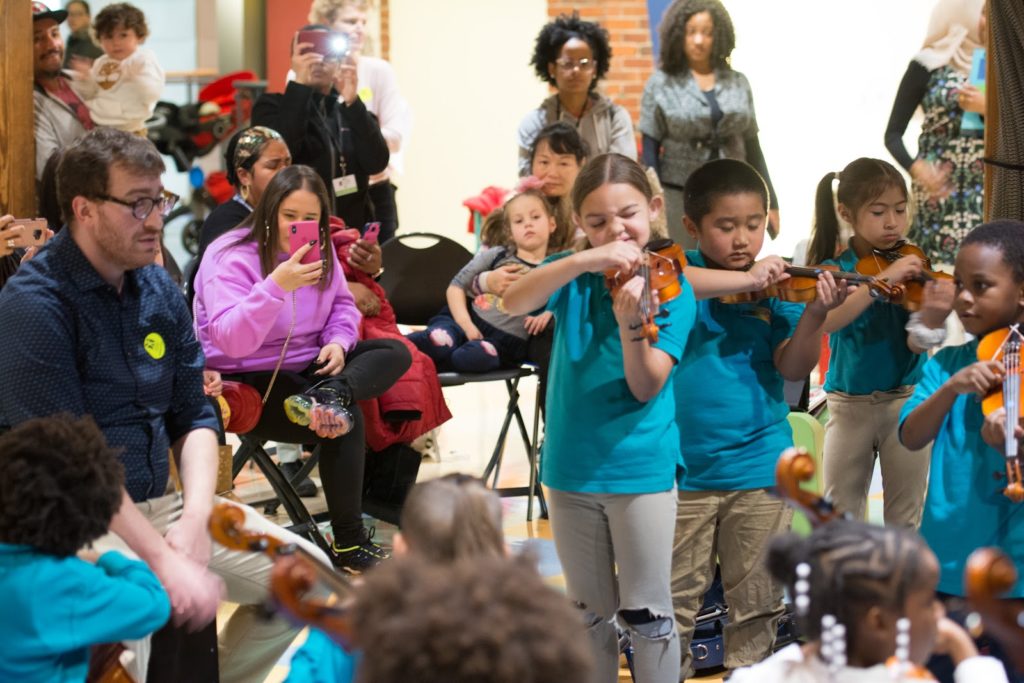Fall is an exciting time musically at Conservatory Lab’s Lower School: our first-grade musicians finally become a string orchestra! Since PreK, they have been observing the string musicians in first and second grade and wondering, “When will it be my turn?” Their PreK-K2 musical experiences have not only helped develop them as overall musicians with amazing ears and voices but also prepared them to answer the following essential question: Building a First Grade String Orchestra
“What does it mean to be an orchestra?”
This is the question I ask students when they walk into the orchestra room on the first day of first grade. Typically, students who have been in the school since Pre-K have a strong understanding that an orchestra is a group of people who play music together. But at CLCS, we aim to dig deeper. As students explore the instruments we will eventually play, we aim to answer the above question by unpacking others, such as:
- What are the skills a musician needs to be a member of an orchestra?
- How do I contribute as a member of a group?
What are the skills a musician needs to be a member of an orchestra?
The Early Childhood Music Program is one of the great advantages of our music program. I firmly believe the skills learned in these formative years from their dedicated and skilled teachers set the students up to be incredibly successful in any ensemble-based context. In PreK and kindergarten, students develop their sense of beat and meter through movement and percussion instrument study. Their sense of pitch and musicality are honed through vocal exploration and development. Most importantly, students learn how to function as an ensemble. This goes beyond preparing repertoire for performances. Students learn how to celebrate their own growth, as well as the growth of their peers. They take risks and build courage by improvising rhythms and short melodies. Our young musicians learn that everyone has a role to play in making beautiful music. These invaluable skills set-up young musicians for success in first grade and beyond.
In the orchestra, it goes without saying that students need to develop strong technical skills with their instruments. While technique is not the primary goal of our program, its development facilitates students’ ability to participate, make progress, and feel successful. The foundational years at CLCS are critical in this endeavor. Students must learn how to play their instruments with freedom of physical motion in order to develop a beautiful tone quality. In addition, students need to learn a variety of bowing patterns, bow strokes, and left-hand finger patterns, in order to develop a diverse palette of tones and sounds from which to draw when they are playing and composing. These skills are what I like to call spiral skills: we always return to them, even in our most advanced years, as they lay the foundation for all learning to come.
Music Literacy is the umbrella term for aural skills, written skills, and reading skills. Students have been developing their aural skills since PreK. By being immersed in music every day, students develop a keen sense of pitch, beat, rhythm, and meter. The transfer from rote to written/reading carries with it many important considerations and requires heavy scaffolding in the younger years. As students progress, it is important to introduce this skill methodically. Often, a student with a keen ear finds themselves leaning on their ear and struggling to read music. Both are important skills, and a musician in an orchestral context needs to feel comfortable with each.
A healthy foundation in ensemble skills, technique, and music literacy provides students with the skills they need to function effectively as an orchestra. In addition, these skills directly impact students’ ability to develop complex, high quality, creative work. While complete mastery of these skills is not necessary in order to create high-quality compositions, they greatly aid in a students’ creative process.
How do I contribute as a member of a group?
While the orchestra typically has a conductor, at CLCS, we have to begin to use a conductor far less often. Teachers often sit with students in the orchestra and provide leadership opportunities for students. This practice decentralizes power from the teacher, making the process more democratic and centered on the musicians. Student leaders in an orchestra may decide what to work on during a rehearsal or lead their orchestra from rest position to playing position.
The most integral way members of an orchestra contribute is through critique. When something is being practiced, repetition can be just as harmful as it is helpful. Playing the same passage over and over again might help strengthen muscle memory and better learn notes and rhythms, but does little to improve the musical minutiae. When repetition is performed with intention, we not only train the muscles but the ear and the mind as well. The intention is directly related to the feedback given by the teacher and by the students. By honing students’ ears, and helping them develop a rich musical vocabulary, students are better able to communicate their musical intentions with their peers and collectively make musical decisions.
Circling Back: What does it mean to be an orchestra?
In many orchestra programs, the curriculum is often repertoire based: students learn the skills necessary to rehearse and perform music for a performance. While this is an important part of any ensemble-based program, at CLCS, we have found that there are many social-emotional skills that are just as, if not more, important to learn from struggling together to prepare music for a concert.
Students learn how to take risks by playing by themselves for their teachers and their peers. They adopt a growth mindset by opening themselves up to critique. And, most importantly, students develop a shared sense of struggle as they grapple with the challenging skills they have to learn in order to prepare music for performance. Oftentimes, the concert is seen as the reward for this hard work. It is incredibly exciting to put on an electrifying performance and our students do so, time and time again. But I would like to think that the process of getting to the performance is the reward due to the growth that happens along the way. That is what it means to be an orchestra: to grapple, struggle, and grow together in the process of learning, creating, and making music.




